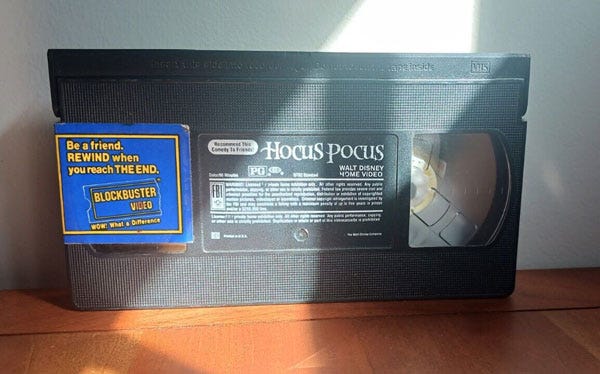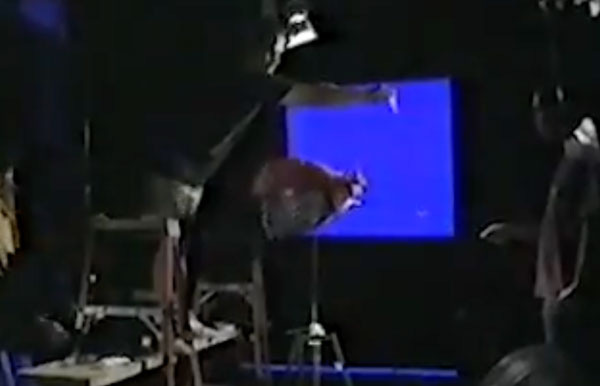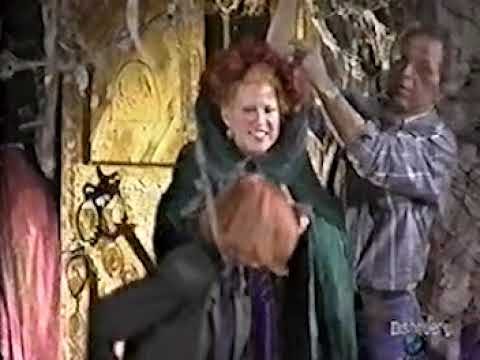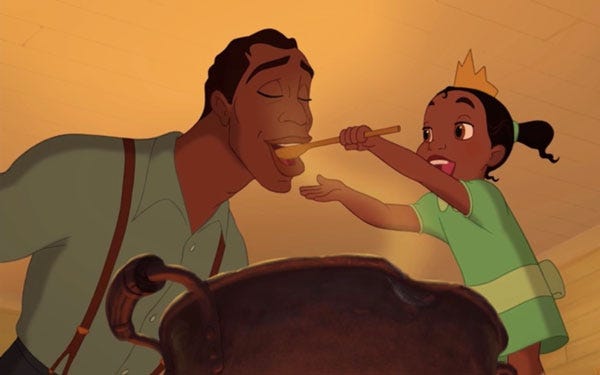Wednesday Walk: 3 Ways to Make Witches Fly
The healing power of gumbo, some old school Hollywood effects, and more reasons to be anti-Amazon
Welcome to Willoughby Hills!
Every Wednesday, I offer a few short ideas that I hope will inspire you to do some more reading, thinking, and exploring. Let’s take a little walk together and see where the path leads…
Healing Gumbo
I am still struggling with the last legs of a bad cold. It’s been going on two weeks now, so yeah, I’m very much over the idea of it (but not quite over the symptoms).
I went to the doctor this morning just to get checked again to make sure it’s not anything more severe that requires a different treatment plan, but the advice continues to be to rest up, get fluids, and let the body heal itself.
As I said on my most recent podcast episode with Ashley Fairbanks (if you haven’t heard it yet, please go listen- it’s such a great conversation!), I’ve been trying to fight this illness off as naturally as possible. I relented earlier this week and in a fit of misery, bought some Robitussin. It actually made my cough worse and I was literally counting down the minutes until the dosage wore off!
What I have found to be the most healing food is actually gumbo. My wife came up with a recipe a few years ago because our kids had always wanted to try it. (Gumbo features prominently in the film Princess and the Frog, which is what made them first want it. Anybody who argues that films aren’t powerful hasn’t met kids who want gumbo after seeing Tiana whip up a pot of it).
Soups in general are great for colds, but I think gumbo’s combination of shrimp and okra (both of which are anti-inflammatory) really helps. Every time I eat a bowl of her gumbo, I feel a bit like Popeye gaining strength from a can of spinach- the effects are that immediate. Sadly though, they are temporary, as the cold takes over again in an hour or two.
If you find yourself under the weather this time of year, maybe try adding gumbo into your rotation. It has strangely worked for me!
Some Halloween Fun
As I wrote about last year, I am not a fan of how Halloween has become dedicated to so much overconsumption.
I was reminiscing with my wife the other day about how the scariest house in my neighborhood as a child used to have a strobe light in their window. Yes, a single strobe light. And they were the family that went all out! That strobe light terrified me because it literally looked like lightning indoors.
These days, the aisles of big box stores and neighbor’s yards seem to feature increasingly elaborate inflatables, animatronics, foam skeletons, and plastic headstones.
That’s not to say that I don’t enjoy marking the ritual of holidays as they pass, I just try to find ways to do it that don’t involve buying more plastic.
Perhaps one of my favorite Halloween traditions is watching the movie Hocus Pocus.
The movie, despite initially flopping at the box office, has seen a bit of a resurgence in recent years. This is often attributed to the show being in steady rotation on ABC, Disney Channel, and Freeform during October.
I first discovered the film back in the mid 1990s. It was actually “my sister’s movie,” one of the preowned films our parents would let us buy on VHS when Blockbuster took films out of rotation and sold them at a discount. She had picked this movie, I’m not sure which I had picked at the time. But it’s Hocus Pocus that has endured.

I thought that I knew nearly all the trivia that there is to know about this movie (like how some scenes were shot in Salem and Marblehead, MA, while others were shot in Los Angeles using famous backlot fixtures like the “Friends fountain.”)
But I stumbled upon an interesting behind-the-scenes documentary produced by the Discovery Channel in the 1990s that I had to share, because it goes into extreme detail about how all of the flying sequences were accomplished.
Not surprisingly, much of the flying was done with wire rigging, where the actors were connected to an elaborate structure mounted to the ceiling of a soundstage. There was also a different rig that was used for close-up shots. It looked similar to a camera jib or a teeter totter, where the actor was harnessed into one end there were counterweights mounted to the other side.
But what caught my attention was how they accomplished the wide shots of the three witches flying. They were actually intricate puppets!
The puppets were made to be exact duplicates of the three actors, right down to the cloth of their cloaks. They were fully articulated, controlled by a series of overhead rods. And they looked to be about the size of a Barbie doll.

This was once a common technique, used on Hollywood classics like Superman, Batman, and E.T.
If you’re interested in pre-digital special effects, the entire special is worth a watch (and the version I linked to is only about 20 minutes long). Fair warning: it looks like it was taped off the air on VHS back in the 90s, then at some point digitized and uploaded to YouTube, so it’s not really the best quality.
One of my favorite things about working in production has always been these little magic tricks that are invisible to the audience, but which make the storytelling possible. I love that within a 10 second sequence of a 90s Disney movie, we may see a flying puppet, a wire-rigged actor, and then a crane-mounted actor, shot weeks apart on different stages, and believe it’s all the same moment in time with the same person.
Amazon Alphabet Soup
My piece a few weeks ago about finally deciding to drop Amazon Prime membership garnered a lot of reactions, with many people opting to follow suit. I suspect many more people may be dropping Amazon memberships after Amazon founder Jeff Bezos (who also owns The Washington Post) blocked the paper’s editorial board from printing an endorsement of Vice President Harris. Supposedly, the move cost the Post more than 200,000 subscribers.
But as you may recall, my reasons for dropping Prime were less political, and more had to do with a declining value proposition, while also feeling an increased overconsumption that I wanted to curb.
In particular, I was struck with the influx of cheap imported goods, often with brand names that are just a series of random letters (SUNHZMCKP, for example). At first, I didn’t know what to call those cheap brands and I didn’t quite understand why Amazon allows them to flourish. But then I happened to see a video this past week that helped me learn more.
It turns out, those off-brands are sometimes referred to as “Alphabet Soup” brands (because of the seeming randomness of letters in their name), and Amazon allows them to dominate the platform for one big reason: money.
As the video above details, the proliferation of these Alphabet Soup brands makes it harder to find any helpful, actual results when searching within the platform, and in order for name brands to compete, they must now pay for priority search results to stand out from the pack of imitators.
The video also discusses the near-monopoly power that Amazon exerts on sellers. For example, any third party that sells on Amazon must offer their lowest price on Amazon. So if I own a small business and sell through my website and on Amazon, the price through Amazon is contractually required to be lowest. They even have bots scanning the web constantly for compliance!
Something hadn’t been sitting right with me for a long time about Amazon. If you feel the same way, hopefully the above video will help you understand why. And if you missed it before, here’s why I chose to ditch Prime for our family.
I publish new issues every Wednesday and Sunday. Sign up to always receive the latest issue and support my work:
Other Wednesday Walks
If you’ve missed past issues of this newsletter, they are available to read here.





